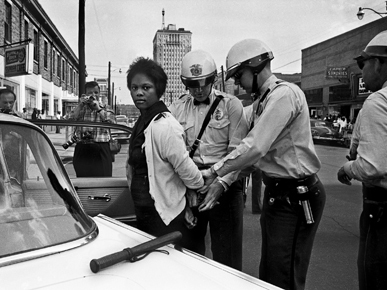The Birmingham Children’s Crusade of 1963 was innovative, original, and efficient. The use of children not only multiplied the number of active participants tenfold but it also provided organizers with a much-needed bypass around employment and homeowner obligations. As hundreds of children left their classrooms to occupy streets, sidewalks, and various establishments, it was clear that law enforcement had great difficulty handling their newest challenge. As they attempted to clear the streets, police vans were replaced with school buses and field pens replaced jail cells. As the movement progressed, Birmingham law enforcement soon realized that a change in tactic would be necessary. As more children took to the streets, law enforcement returned with high-pressure hoses and police dogs. While one may question why any organizer would subject children to such violence, Rev. James Bevel, key organizer for the Birmingham Children’s Crusade, notes that the youth were adamant about joining the movement and that it was the young women who took to the streets with the greatest vigor. In this image, we see a young woman being detained by two police officers and placed into the back of a police car, with a third officer to the side keeping a watchful eye. On the trunk of the car lies one of the officers’ batons and behind them stand two members of the media taking photographs and documenting the interaction. The face of the young woman is calm, almost confident. Her eyes are steady and she stands proud despite the dangerous uncertainty that lies ahead.
In his interview for “Eyes on the Prize,” Bevel discusses the impact that young women had on the movement. He notes that as he reached out to schools and various youth for involvement, he understood that it was young women that had the most influence in their respective communities. By reaching out to them first, others would note their involvement and want to participate as well (in a sort of trickle-down effect). He also discusses the speed with which the young women acclimated themselves to their new roles: “The brunt of the violence in the South was directed towards the young males. So that the females had not experienced that kind of negative violence [...] So their involvement was more spontaneous and up front than say, the guys” (14).
